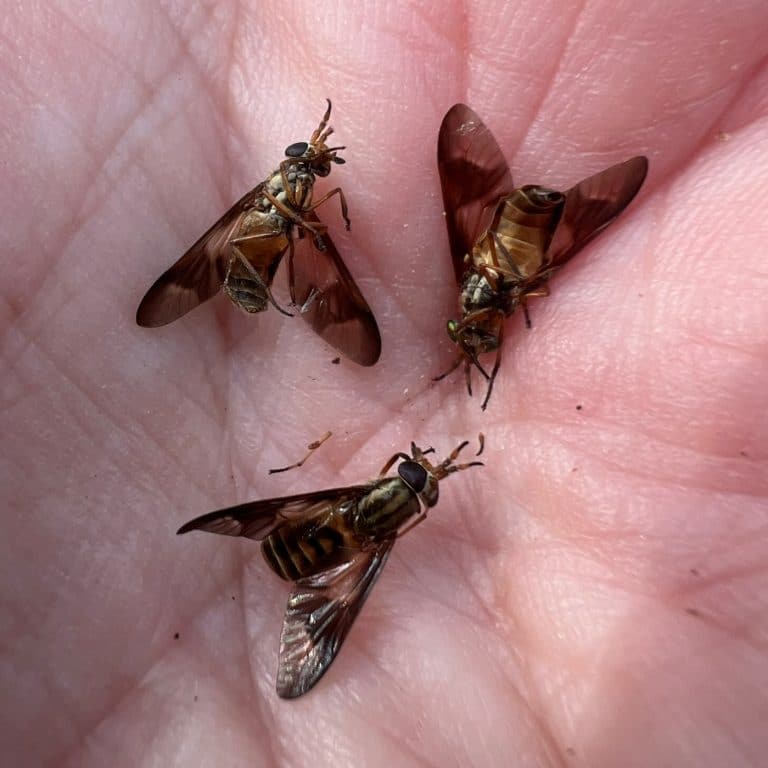It is May in coastal Mississippi. And just when you are enjoying the nice cool mornings, it begins – Deer Fly season! First, you hear the buzz of these aerial acrobats as they make their first pass by your head. Your arms twitch with anticipation of their landing, somewhere on exposed skin, usually your face. You cannot stop that first swing and a miss as your hand delivers its blow.
Yes, Deer Fly season is a price we all pay to live in coastal Mississippi. What makes it more disappointing is that Sand Fly Season (March) has just subsided. We were happy enjoying the “nice” weather, bug-free, before summer sets in.
I always get the same questions every year about these pesky flies, so let me share a bit about them. First of all, deer flies, also known as yellow flies, are from a large group of blood-sucking insects that include their larger cousins, horse flies. Females are blood-seeking while males feed on nectar during their short lives. Larvae are aquatic, living in a variety of wetlands, including the tidal marshes along the coast. Deer fly maggots are predatory, feeding on small aquatic critters in the mud of marshes.
Coastal regions support much larger populations of deer flies because of the amount of marsh and their natural productivity. Plenty of food for the maggots and plenty of warm-bodied targets for the adults. Deer flies and horse flies seek any type of mammal that happens to be nearby, including cattle and people. You have to feel pity for cattle and horses that live along the coast and deal with the constant onslaught from these flies. Their tails work overtime.
But why do they seem to go for our heads? It turns out that the vision of these insects is shifted to the infrared part of the light spectrum. They see heat – especially from the exposed parts of our bodies – our heads and arms. This fly’s perchance for swarming your head is all about the greater heat emanating from it – where a nice blood meal awaits.
Their bite is like that of a sand fly – two saw-tooth cutting blades that illicit blood to flow, as another mouth part laps it up. The difference between the two bloodsuckers is that deer flies do it faster! By the time you feel them hit your arm, they are biting before your hand misses them. And no, there is no effective chemical defense that I have found. Some folks claim success with essential oils, but these beasts just “grin and bear it” as far as I have experienced.
My go-to defense is to also grin and bear it until they land when I try to take out as many as possible – without leaving too many bruises. It may seem counterintuitive but getting out of the shade also helps. Standing in the shade, your head is the hottest thing. Standing in the sun, it is less so, as long as you stand still or walk slowly.

Apart from swatting them, I have found some comfort in using my trusty insect net, swung around my head in a figure-eight pattern, to collect them – I thank my major professor for that skill. A couple of quick smacks of the end of the bag does the trick. My friend Jessie at the Marine Education Center does this every morning during the season to get a sense of abundance – and exercise. Other folks have taken to placing a black nursery pot on a pole in the yard smeared with Vaseline or Tangle Foot to entrap them. The heat signature of the black pot draws them to their demise.
So, although we may not enjoy deer fly season that much, it does help us get a little cardio exercise in and firm up those bags under our arms. And we are not embarrassed about our Deer Fly dances – we all have one. A small price to pay for living a coastal life.
Hope to see you in our great outdoors!